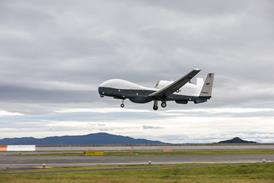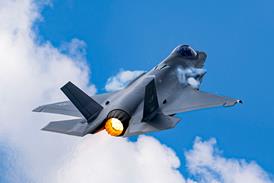Spanish investigators believe that the Bombardier CRJ200 crew involved in a gear-up landing at Barcelona forgot to lower the undercarriage after becoming distracted by a problem with the jet's flaps.
As the Air Nostrum aircraft approached runway 25R, following a flight from Valladolid, the flaps failed to deploy to the 8° setting selected.
This failure was traced to actuator icing - a known problem on the type in cold weather - and on both previous sectors, with different crews, the jet had experienced flap problems.
The crew opted to conduct a flapless approach, requiring higher landing speeds, in crosswind conditions; a preceding aircraft had warned of the possibility of windshear.
Radio traffic was heavy and the crew was "focused" on the demanding approach, says Spanish investigation authority CIAIAC. It states that, crucially, there was "no indication" that the 'before landing' checklists were completed.
In the moments before touchdown several alarms in the cockpit sounded as a result of the aircraft's configuration, alerting the crew to minimums, terrain, and sink rate.
 |
|---|
© CIAIAC |
CIAIAC adds that these alarms included a 'too low, gear' warning which sounded 15 times. But it states that the crew "probably confused" this alert with the 'too low, flap' warning - even though this had been inhibited.
"It is obvious that, either from excessive concentration or from believing they were not relevant, the crew did not manage to identify the aircraft configuration properly," says the final report into the 24 January 2007 incident.
With its gear still retracted, the jet landed on its lower fuselage at 168kt. This high initial speed, and subsequent ground effect, resulted in the aircraft's skidding for 1,900m before coming to rest just 250m from the runway's far end.
None of the 44 passengers and crew received serious injuries during the incident.
Source: Air Transport Intelligence news























